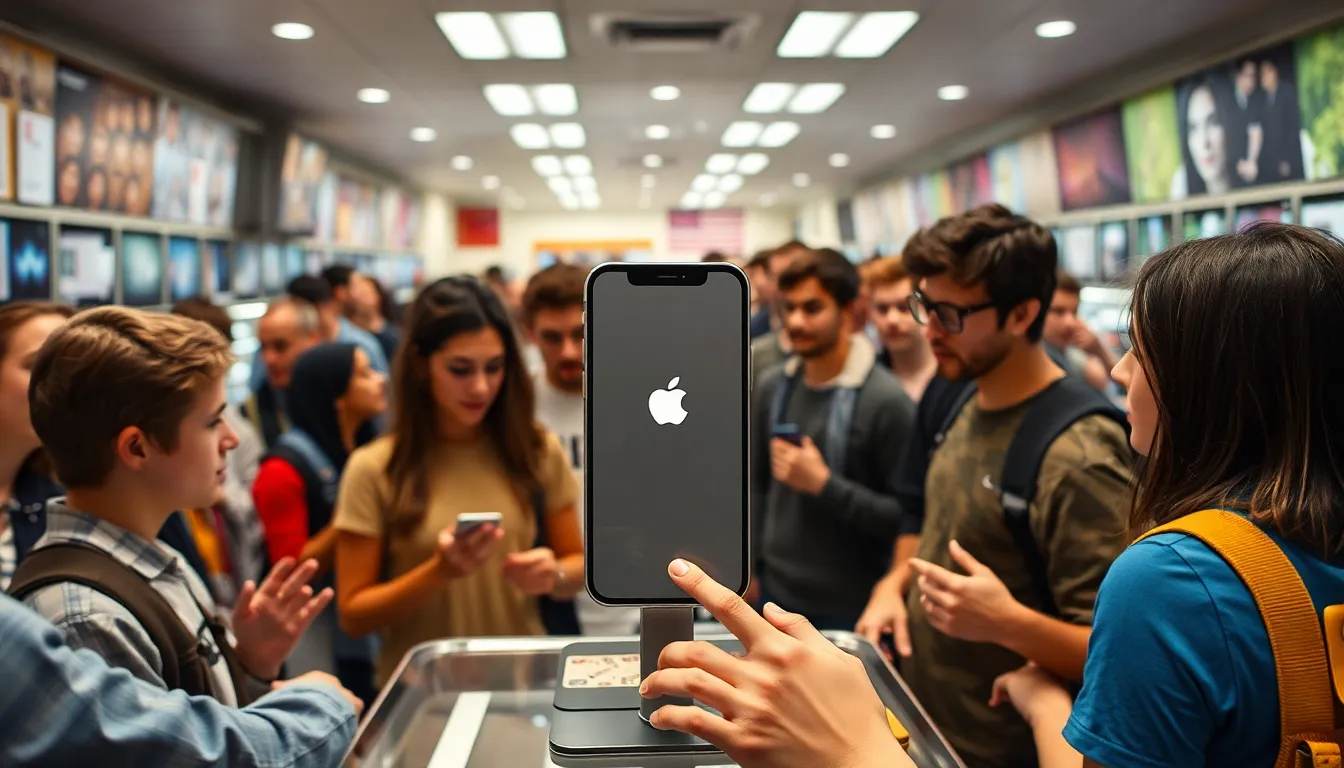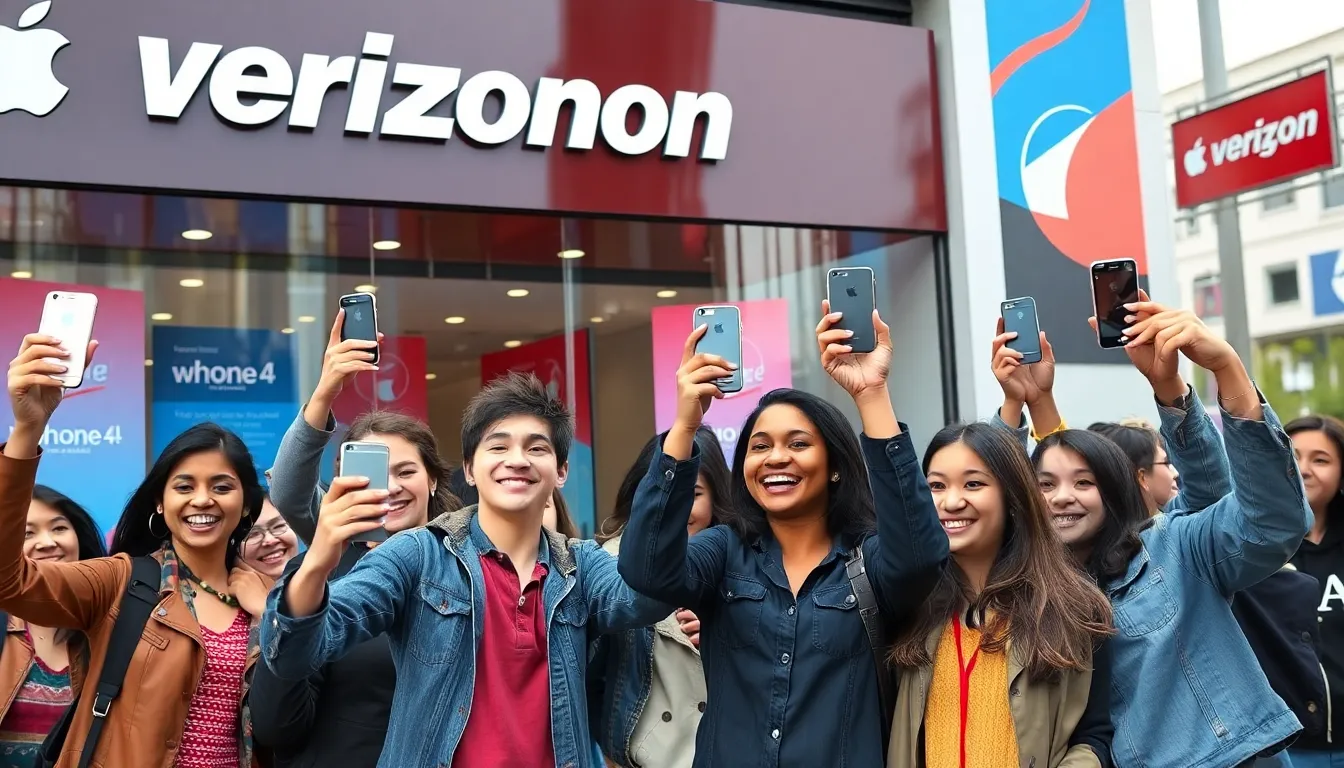The iPhone revolutionized the smartphone game, but for years, Verizon customers were left watching from the sidelines. Imagine the frustration—like being at a concert but stuck outside the venue. They wanted in on the action, but AT&T had a lock on Apple’s coveted device.
Table of Contents
ToggleBackground of Verizon and iPhone
Verizon Wireless established itself as a leading telecommunications provider in the United States. iPhone, created by Apple, revolutionized the smartphone market upon its launch in 2007. Exclusivity with AT&T restricted Verizon customers from accessing this innovative device during the early years. Frustration among Verizon users escalated as they witnessed the iPhone’s growing popularity without any opportunity to experience it themselves.
In early 2011, a significant change occurred. Verizon announced a partnership with Apple to offer the iPhone 4, marking a turning point for both companies. Customers eagerly anticipated this launch, as they finally had an option to use Verizon’s network with the iPhone’s advanced features. The introduction of the iPhone on Verizon’s platform broadened the smartphone market and enhanced competition.
Following the launch of the iPhone 4, Verizon saw a surge in new customers. Offers like no long-term contracts and flexible pricing plans attracted users looking for alternatives to AT&T. Customer loyalty strengthened as Verizon improved its service quality in response to the new competition.
Various models of the iPhone were subsequently made available on Verizon’s network. Continued demand for iPhones fueled Verizon’s growth and innovation in smartphone-related services. Today, both Verizon and Apple benefit from this early decision, solidifying their positions in the smartphone industry.
Initial Release of the iPhone

The iPhone’s introduction marked a pivotal moment in the smartphone landscape. Apple launched the first iPhone on June 29, 2007, with a bold marketing strategy focused on design and user experience.
Apple’s Original Launch Strategy
Apple’s approach emphasized simplicity and integration. By combining a phone, iPod, and internet communication device, Apple created a unique offering. The company targeted tech-savvy consumers drawn to innovative features and sleek design. A marketing blitz cultivated anticipation, generating excitement leading to its release. Early adopters flocked to stores, eager to experience this groundbreaking device. Apple’s strategy set a high standard for future smartphones, shifting market dynamics.
Verizon’s Position in the Market
Verizon held a strong position as a leading telecommunications provider. Before gaining access to the iPhone, Verizon focused on enhancing service quality and expanding its network. Competitors like AT&T capitalized on exclusivity, capturing a significant market share. Verizon’s vast and reliable network attracted many customers, creating a solid foundation for future growth. Once the iPhone partnership began, Verizon leveraged its existing client base and enhanced service reputation to draw in new users. This collaboration marked a turning point, allowing Verizon to further strengthen its brand and customer loyalty.
Verizon’s Announcement of the iPhone
Verizon’s partnership with Apple marked a significant moment for both companies and customers. Established in early 2011, this collaboration allowed Verizon to introduce the iPhone 4 to its network.
Timeline of Events
The timeline of events leading to the launch of the iPhone on Verizon includes key milestones. In January 2011, Verizon’s CEO, Lowell McAdam, announced the partnership during the Consumer Electronics Show. Within weeks, pre-orders for the iPhone 4 began, attracting immense interest. The device officially launched on February 10, 2011, enabling millions of Verizon customers to finally access the iPhone. Since then, Verizon consistently added various iPhone models to its offering, transforming the competitive landscape of the smartphone market.
Key Features of the Verizon iPhone
Key features of the Verizon iPhone played a crucial role in attracting users. The iPhone 4 featured high-resolution Retina Display, enhancing visual clarity and improving user experience. Additionally, the device supported FaceTime, allowing users to make video calls over Wi-Fi and cellular networks. It also included a front-facing camera and a powerful A4 chip, delivering seamless performance for apps and multitasking. The introduction of these features not only met customer expectations but also set a new standard in smartphone technology.
Impact on the Smartphone Market
The arrival of the iPhone on Verizon’s network significantly altered the smartphone landscape. This transition influenced how consumers viewed and interacted with mobile technology.
Changes in Consumer Behavior
Consumer preferences shifted dramatically after the iPhone became available on Verizon. Users sought smartphones with advanced features, favoring designs that integrated multimedia capabilities. Many customers who previously chose less advanced devices changed their minds when faced with the appeal of the iPhone’s Retina Display and app ecosystem. Increased demand for high-quality smartphones emerged, prompting competitors to enhance their offerings. Verizon customers embraced the new technology, showing higher engagement rates on social media and increased usage of mobile applications. Enhanced satisfaction and loyalty among customers became evident, leading to growth in smartphone adoption across various demographics.
Competitor Reactions
Competitors quickly recognized the implications of Verizon’s partnership with Apple. Carriers like AT&T felt pressure to maintain their market dominance as more users gravitated towards Verizon to access the iPhone. Many began modifying their pricing strategies and expanding their own device offerings to retain existing customers. Companies also invested heavily in marketing campaigns aimed at undercutting Verizon’s iPhone sales. Furthermore, other manufacturers intensified their innovative efforts, leading to a surge in smartphone feature advancements and design aesthetics. The introduction of the iPhone on Verizon’s network ultimately forced competitors to rethink their strategies within the rapidly evolving smartphone market.
The introduction of the iPhone to Verizon’s network marked a transformative moment in the smartphone industry. It not only satisfied the long-standing demand from Verizon customers but also reshaped consumer expectations for mobile technology. With the iPhone 4’s launch in February 2011, Verizon solidified its position as a leading telecommunications provider and enhanced customer loyalty.
This partnership fostered innovation and competition among carriers, pushing the entire industry forward. The impact of Verizon’s access to the iPhone continues to be felt today as it paved the way for a diverse range of smartphones and advanced features that consumers now expect.




